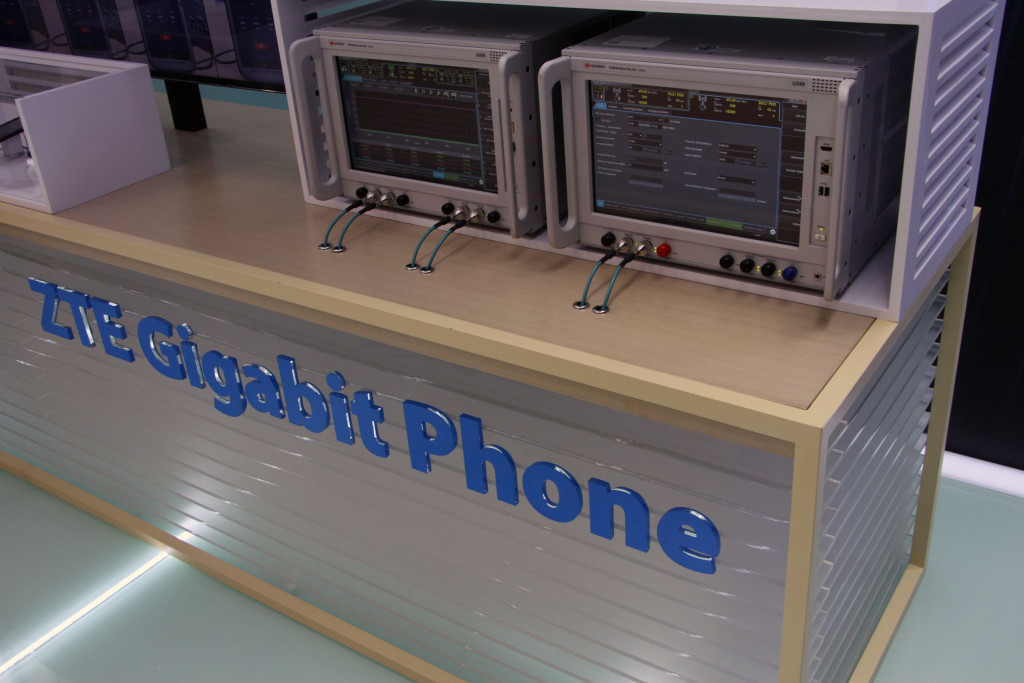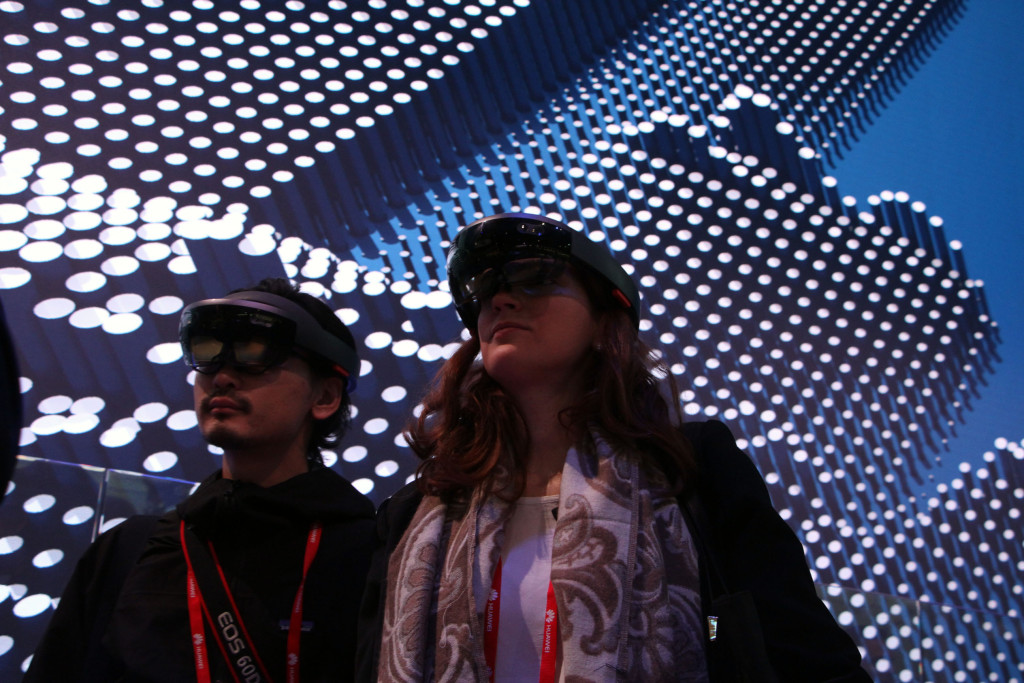Tech companies are terrible at tempering expectations. Really, really bad. Take last month, when Qualcomm CEO Stephen Mollenkopf told the audience at his CES keynote, “5G will have an impact similar to the introduction of electricity or the automobile, affecting entire economies and benefiting entire societies.” That’s a pretty damn high bar.
And really, the chief executive at the San Diego-based chipmaker was only laying the groundwork for the hype to come. At CES in January, 5G was a small piece of the overall conversation. This week at MWC, it dominated headlines and was a far bigger buzzword than the G5, G6, Tab 3, 3310 and the Nougat smoothies.
The proposed next-gen communications standard got plenty of lip service at press conferences, ranging from marquee names like Samsung and Nokia. It also dominated a panel featuring top figures from the FCC and the European Commission, and grabbed breathless headlines trading in the same hyperbolic lexicon as Mollenkopf’s statement from last month.
5G is coming. It will be faster, it will be cheaper and it will support a broad range of devices. But we’re not there yet. The most optimistic projections set 2020 as a date for a wider rollout. And more to the point, no one is entirely sure how to define 5G at the moment, beyond the fairly nebulous notion of it being the successor to 4G.
There are a lot of players with a lot of proposals, but the industry has yet to settle upon a consistent definition, including precisely what aspect of the wireless spectrum the technology will occupy.
In a conversation at MWC this week, Qualcomm told us that it feels “pretty confident” that “a portion” of the standard will be closed out by end of year, with actual finalization occurring mid-2018. At the moment, the 3GPP (3rd Generation Partnership Project) is still in the “study item” phase of the technology and the ITU published its first draft of the spec a few days ago.
“The problem is that everyone’s gotten so caught up in this sci-fi, flying robots, one-millisecond latency story that the actual real-world questions around 5G seem to have gotten lost in the rush,” Disruptive Analysis founder Dean Bubley tells TechCrunch.
The promises of 5G are too many to mention. It’s positively dizzying, ranging from smartphones and home internet to the equally buzzy Internet of Things and self-driving cars. Intel, which has a vested interest in getting in early on 5G after largely letting LTE pass it by, has been equally enthusiastic in its proclamations.
At CES, the chipmaker unveiled a 5G modem it deemed “a milestone for the industry.” This week, it announced a 5G alliance with Ericsson. “5G is not simply about making smartphones faster,” Intel VP Asha Keddy told the press in a statement marking the deal. “It’s about the machines and things that will deliver an entirely new smart and connected future. Building our 5G future requires a new approach to industry collaboration and development.”
At its MWC booth, the company is showcasing a prototype 5G network, sporting everything from a VR headset to a connected car. “We’re not in the business of just demonstrating technologies,” Robert Topol, Intel’s GM of 5G Business and Technology tells TechCrunch. “We’ve been actively marketing 5G because we want people to bring the ideas in. We want a company like Honeywell or GE to bring in industrial automation ideas. We want VR partners to bring in tetherless VR ideas. We want drone companies to talk about delivering logistics in different models.”
Topol is quick to explain that 5G needs to extend “beyond the smartphone,” though mobile devices will continue to serve as an important gateway to areas like the connected home and VR. Though he freely admitted that the company is aggressive in its pursuit of the new standard, in part due to the fact that it missed the boat on LTE. As such, the company is eyeing a return to mobile timed for the anticipated arrival of 5G smartphones.
Next door, ZTE is showing off its prototype Gigaphone, a proof-of-concept device designed to show what the company could potentially do to help ease the prolonged transition into 5G, along with the difficult to pronounce “5uper Generation” (I’ve been saying “fooper”) tagline.
The concept handset utilizes carrier aggregation to eventually (or potentially) deliver speeds of up to 1 Gbps. But it also adds to a growing sense of confusion around precisely what 5G is, what it does and when it will get here.
For smartphone makers, there is another bonus to the 5G hype: When there’s no point in making screen resolutions any higher and their sizes have maxed out, 5G seems like the next logical battleground for keeping the smartphone upgrade cycle moving according to plan.
“The way people talk about it is that it’s going to solve everything in the world,” Qualcomm’s Director, Technical Marketing Matt Branda tells TechCrunch with a laugh. He acknowledges that the hype is, perhaps, overwhelming, but so too is the potential. Branda cites a recent study commissioned by the chipmaker that served as the foundation of Mollenkopf’s headline-grabbing CES statement.
In it, Qualcomm found that, “In 2035 [regarded as the end of the technology’s window], 5G will enable $12.3 trillion of global economic output[…] nearly equivalent to US consumer spending in 2016 and more than the combined spending by consumers in China, Japan, Germany, the United Kingdom, and France in 2016.” The technology will also “be equivalent to an economy the size of India” between 2020 and 2035 and will “support 22 million jobs,” according to the study conducted by analyst group, HIS Markit.
“Based on [the study],” Branda says, “one of the things 5G has the opportunity to do is lift mobile networks and become a general-purpose technology like electricity. It’s a platform for the next decade and beyond. Yes, there’s a race to get it into handsets by the end of 2019, but there’s also a longer-term vision. That’s where we might put the cart in front of the horse if we hype this too much.”
Bubley refers to the hype as, “5G washing,” explaining, “if you asked me what the biggest innovation between now and 2025 was going to be, I’d have thought some kind of combination of artificial intelligence, CRISPR for gene editing and maybe quantum computing — if it gets its act together — were going to be the top of that table before 5G raises its head.”

The issue, as the industry attempts to hammer out precisely what 5G means for global communication (not to mention what the term literally refers to), is falling into the trap of primarily becoming a marketing term. Qualcomm says it utilizes events like CES and Mobile World Congress to excite its industry partners. But at shows that are equally focused on consumer devices, the waters get muddied pretty quickly.
To be fair, much of the overzealous hype around the technology isn’t aimed at consumers at all (yet), and instead is focused on facilitating the sort of massive infrastructural investments and opening of the spectrum required in order to accommodate the 1.1 billion connections (one in eight mobile connections) the GSMA predicted the technology would reach by 2025.
“We think 5G is really at a crossroads,” Liberty Global CEO Mike Fries told a crowd on the aforementioned panel that also included top names from the FCC and European Commission. “It requires massive investment.“ And with an FCC head so committed to leaving everything up to the free market, now is as good a time as any to push for further deregulation.
But 5G needs to crawl before it walks. Headlines about Verizon [TechCrunch’s parent company] bringing the “super-fast” technology to 11 cities this year were overstated. The news involves testing of the carrier’s pre-standard technology known as Verizon 5G Technology Forum, that will bring trial testing of in-home internet service with help from Samsung and Ericsson.
That kind of fixed use, short-range use case has fewer moving parts to contend with than smartphone usage, broader IoT deployment and connected vehicles, which complicate things with issues of safety and range. But it’s easy to see why a company like Verizon would be so bullish about a technology that promises high broadband speeds without all of the hassles involved in laying down fiber.

The use case seems a realistic first step. Handsets bearing the technology are likely to start arriving before the end of 2019, if standardization goes according to schedule. The 3GPP’s approval process will put true 5G IoT releases off an additional year beyond that. Meantime, it’s healthy to temper expectations a bit, both in terms of the industry and consumers. 5G isn’t going to swoop in and replace its predecessor overnight. Voice over Long-Term Evolution (VoLTE) and IoT LTE both only arrived on the scene relatively recently.
And if companies opt to circumvent the standard approval process by releasing devices with their proprietary technology before adoption, they risk offering up a device that can struggle to work across networks (Intel points to 3G as an example of past issues along those lines).
The road to 2020/2025 will be paved with transitional, rather than transformational technologies. It’s an understandably difficult thing to hear, given the rate of change we’ve grown accustomed to. When it arrives, 5G will undoubtedly have a profound impact on telecommunications, but ironically, industry adoption of that kind of speed isn’t the kind of thing that happens overnight.
